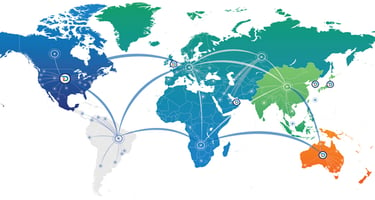In the rapidly evolving digital landscape of 2024, the significance of Content Delivery Networks...
The Role of CDN in Enhancing User Experience
In the digital age of 2024, Content Delivery Networks (CDNs) have emerged as indispensable tools in enhancing user experience across the web. CDNs are networks of servers strategically distributed worldwide, designed to deliver content to users with minimized latency and maximized performance. This case study delves into the multifaceted role of CDNs in optimizing online experiences, drawing insights from recent literature and best practices.
The Foundation of CDN Technology
At its core, a CDN consists of a network of servers located in various regions globally, working together to deliver web content efficiently to users based on their geographic locations. This system significantly reduces the time it takes for data to travel, thereby accelerating content delivery and improving website performance.
Enhancing Web Performance and User Satisfaction
CDNs optimize web performance by caching static content such as images, CSS, and JavaScript files on servers close to the user. This approach not only speeds up the loading times of web pages but also ensures a smoother, more responsive user experience. In an era where a delays of even a few seconds can lead to decreased user satisfaction and engagement, CDNs serve as crucial accelerators.
Global Reach and Reduced Latency
One of the standout features of CDNs is their ability to break down geographic barriers. By caching content on servers near users, CDNs provide consistent experiences worldwide, irrespective of the distance from the origin server. This global reach is paramount for businesses aiming to engage international audiences without compromising on speed or accessibility.
Scalability and Cost Efficiency
CDNs offer a scalable and cost-effective solution for handling varying levels of web traffic. They enable websites to manage sudden surges in users — such as those caused by viral content, product launches, or marketing campaigns — without the need for substantial infrastructure investment. By distributing traffic across a network of servers, CDNs prevent any single point of failure, enhancing the reliability and uptime of websites.
Security and Data Protection
In addition to performance benefits, CDNs play a vital role in enhancing web security. They protect against a range of cyber threats, including DDoS attacks, by acting as a buffer between users and the origin server. Through features like SSL/TLS encryption, CDNs secure data transmission, safeguarding user information, and reinforcing trust in digital platforms.
Mobile Optimization
As mobile internet usage continues to rise, CDNs have adapted to optimize content delivery for mobile devices. By serving content from the closest servers, CDNs ensure that mobile users experience fast, efficient access to web resources, enhancing the overall mobile browsing experience.
----
The role of CDNs in enhancing user experience is multifaceted and critical to the success of online platforms in 2024. By reducing latency, ensuring fast and reliable content delivery, offering scalability, improving security, and optimizing for mobile users, CDNs represent a cornerstone of modern web infrastructure. As businesses and content providers strive to meet the ever-increasing expectations of users, leveraging the power of CDNs will remain a key strategy in delivering superior online experiences.
This case study underscores the significance of CDNs in the digital ecosystem, emphasizing their importance in achieving a competitive edge through superior user experience. As the internet evolves, the strategic implementation of CDN technology will continue to play a pivotal role in shaping the future of online content delivery and user engagement.


